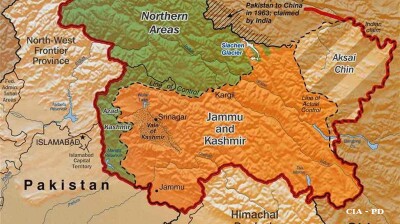For much of the post-war era, Japan’s armed forces – officially termed the Self-Defence Forces (SDF) – have occupied a peculiar place in global military discourse.
Technologically advanced, tightly regulated and constitutionally constrained, the SDF has long been viewed as a capable but defensive force. Yet as tensions rise in East Asia, particularly due to China’s increasingly aggressive military posture, a proper assessment of Japan’s capabilities shows the SDF to be far more formidable than many outside the region may realise.
During the past decade Japan has quietly but steadily modernised its defence apparatus. While Tokyo avoids the loud rhetoric of some of its neighbours, its actions speak volumes. Contrary to the popular perception of a pacifist nation shackled by its post-war constitution, Japan today possesses one of the most sophisticated military forces in the region, and is rapidly adapting to meet emerging threats.
According to the International Institute for Strategic Studies (IISS), Japan’s 2023 defence budget reached a record JPY6.8 trillion (around $52.5bn), placing it among the world’s top 10 military spenders. More tellingly, Prime Minister Fumio Kishida’s government prior to his being succeeded by Shigeru Ishiba pledged to double defence spending over five years – a stark statement of intent. The goal is to reach 2% of GDP by 2027, aligning Japan more closely with Nato standards, and breaking decades of fiscal restraint on security matters.
In practical terms this can be read in many ways.
Japan’s Maritime Self-Defence Force (MSDF) is perhaps the most advanced navy in Asia after the resident detachments of US Navy elements in Japan and South Korea. Its fleet includes – at least – 36 destroyers, 24 submarines (with more on the way) and a growing number of multi-mission vessels equipped with Aegis combat systems. The Izumo-class helicopter destroyers, initially designed for anti-submarine warfare, are being refitted to operate F-35B stealth fighter jets which will effectively turn them into aircraft carriers in all but name.
The Japan Air Self-Defence Force (JASDF), meanwhile, is equipped with around 330 combat aircraft, including over 150 F-15Js and a growing fleet of F-35As approaching 40. The F-35 programme is central to Japan’s air power strategy, with Tokyo planning to acquire at least 147 of the stealth fighters, the largest F-35 fleet outside the United States.
On land, the Japan Ground Self-Defence Force (JGSDF) has over 450 main battle tanks, including the advanced Type 10 MBT, and is increasingly mobile and digitised. Some reports hint at up to 1,000 tanks currently maintained by the JGSDF. Importantly, the government has moved to develop counterstrike capabilities in a notable shift in Japan’s doctrine by acquiring Tomahawk cruise missiles and investing in indigenous long-range missile systems.
This evolution is not occurring in a vacuum, though. It is a direct response to the changing security environment in East Asia, and in particular, the challenge posed by China.
The People’s Republic of China now operates the world’s largest navy in terms of ship numbers and is expanding its air force and missile capabilities at a breathtaking pace. According to the US Department of Defense’s 2023 China Military Power Report, the PLA Navy has over 370 ships and submarines, while the PLA Rocket Force is deploying a growing number of ballistic and hypersonic missiles that could target Japanese and US assets in the region.
Nowhere is the tension more visible than in the East China Sea. The uninhabited Senkaku Islands (Diaoyu in Chinese) are administered by Japan but claimed by China. Chinese coast guard vessels often backed by armed naval ships frequently intrude into Japanese and Taiwanese waters. In 2023 alone, Japan recorded over 170 intrusions by Chinese vessels in the area. These encounters have become so routine that Tokyo has had to regularly scramble JASDF jets to intercept Chinese aircraft approaching Japanese airspace. At one point these sorties averaged over 700 such scrambles per year.
This is not an abstract strategic game. It is a day-to-day reality for Japanese defence personnel and coastal communities in Okinawa Prefecture and of course those in neighbouring Taiwan, who live under the constant spectre of Chinese provocation or even miscalculation.
Beyond the East China Sea, there is also concern about Japan’s closest neighbour – Taiwan. Japan has made it increasingly clear that any conflict involving Taiwan would have direct security implications for Tokyo. Japanese policymakers are especially worried about their southernmost island chain which stretches southwest from Kyushu towards Taiwan. These islands, many of which are sparsely populated, are seen as a weak point in Japan’s defence chain. In response, Tokyo is stationing missile batteries and troops on key islands such as Yonaguni, Ishigaki and Miyako.
As early as 2005 it was revealed that naval facilities in the region were being refitted to accommodate European, most likely British Royal Navy vessels, as well as US ships.
However, some critics argue that Japan still lacks the offensive capabilities to deter China effectively. Others point to the political sensitivity surrounding Article 9 of the Japanese Constitution, which renounces war as a sovereign right. But what is often overlooked is how far Japan has already shifted.
The 2022 National Security Strategy explicitly recognises the right to possess counterstrike capabilities, a move unthinkable just a decade ago. Moreover, Japan is deepening cooperation with allies. The US-Japan alliance remains the bedrock of regional security, but Tokyo is also building closer ties with Australia, the UK and other partners.
If the aim is to build a capable, credible and resilient defence force, then Japan is already well on its way.
In the end, Japan’s strength lies not just in its weapon systems, but in its clarity of thought and mission. Tokyo understands that peace is best preserved through strength, and in a region where threats are growing, that clarity is essential. The Self-Defence Forces may not project power like some of their counterparts, but China should make no mistake: they are a cornerstone of stability in East Asia. And as long as Beijing continues its military expansionism and aggressive posturing, that role will only grow in importance.
Features

BEYOND THE BOSPORUS: Prosecutors make move on “fictitious export schemes” of Istanbul Gold Refinery
Observers point to intra-regime gangs seizing each other’s wealth, remember Erdogan’s “Hello Fatih” phone calls and ponder whether wanted man Turgay Ciner is in London.

Taliban visit to India upsets Pakistan, signals New Delhi's changing Afghan posture
Coinciding with the visit, Pakistan conducted military operations inside Afghanistan, followed by airstrikes on multiple border towns. Retaliation against Pakistan's police training facilities and border outposts followed.

Pakistan’s India-shaped chip on the shoulder, and why a peaceful coexistence is as elusive as ever
Pakistan must first redefine how it sees India - not solely as a threat to be contained but as a neighbour with whom coexistence is unavoidable. That psychological leap has eluded generations of Pakistani leaders.

Trump shocked by China’s move on rare earths, threatens more 100% tariffs
"Some very strange things are happening in China!" Trump wrote in a post on his Truth Social account on October 10, adding "They are becoming very hostile."


